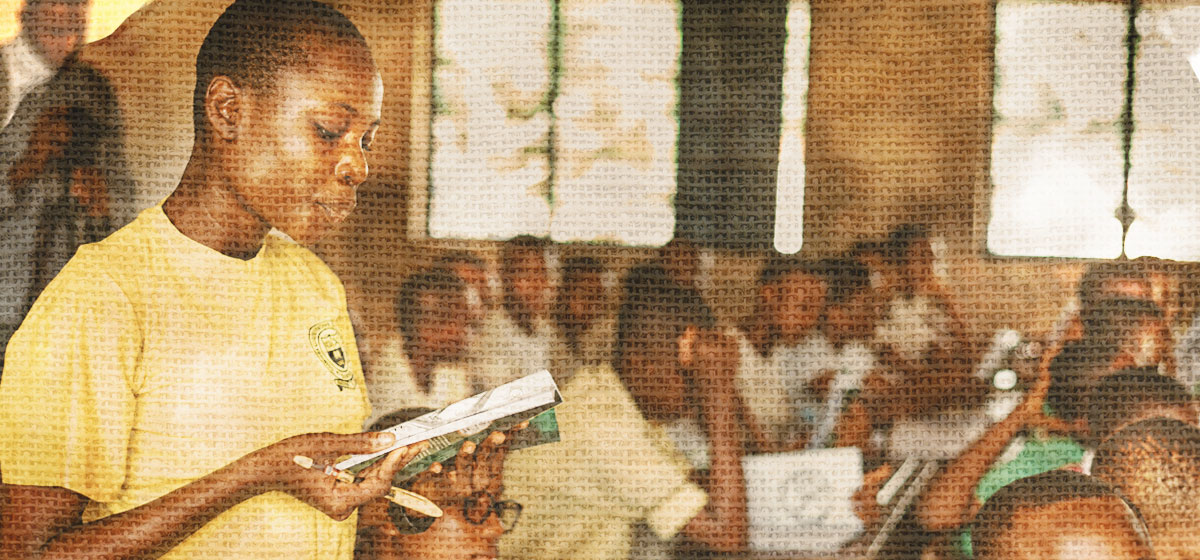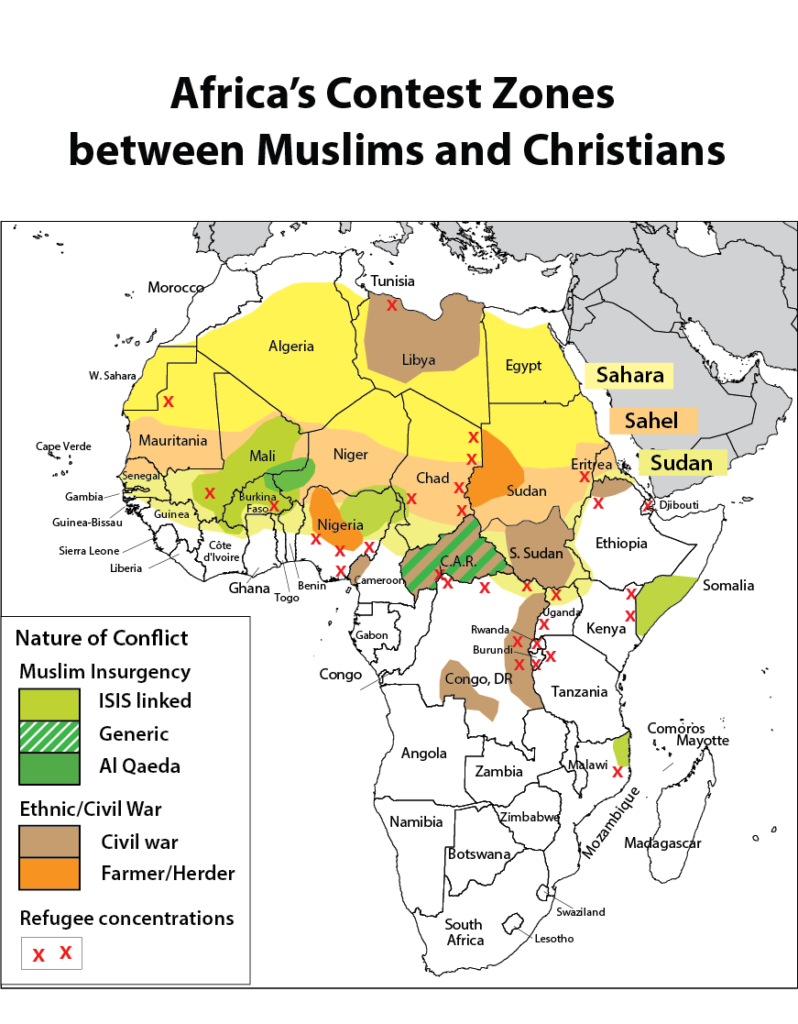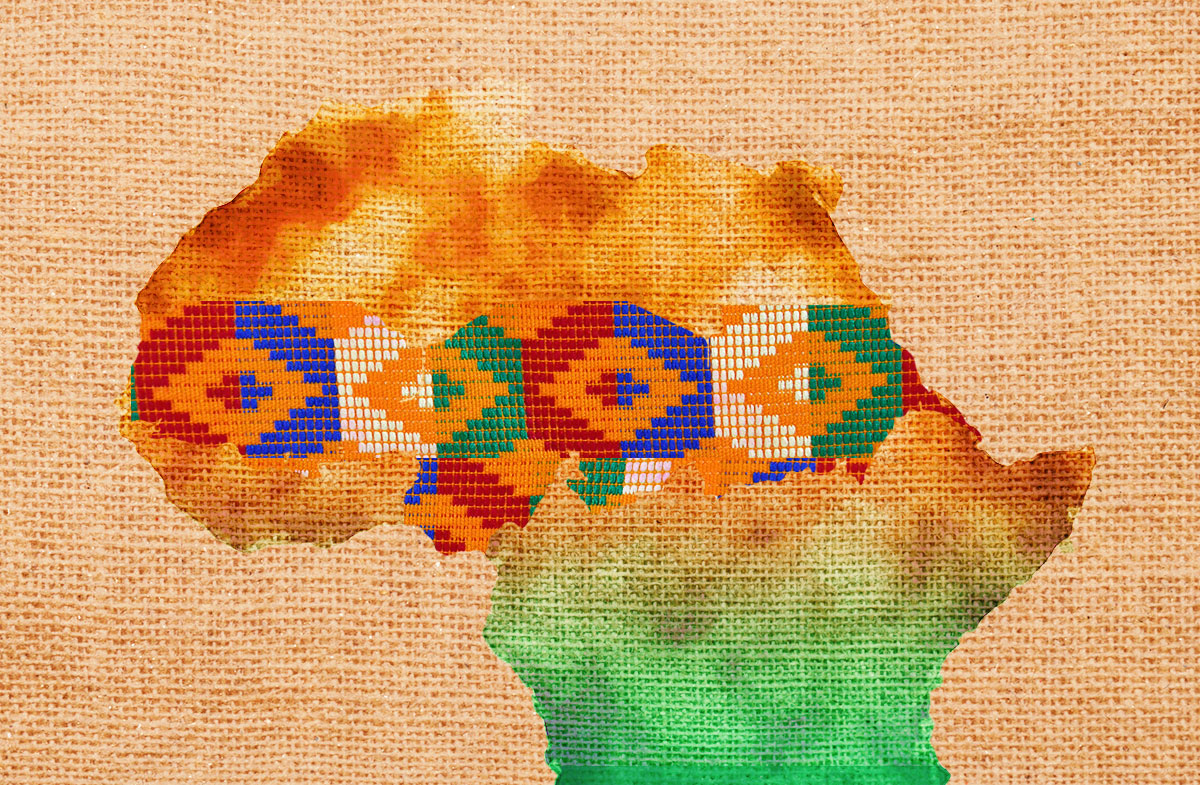A closer look at one of the most challenging regions for global missions today.
Editor’s Note: This article is part 1 of a three-part series by Patrick Johnstone, author emeritus of Operation World, on the Sahel region. Read parts two and three.
Africa is a part of my life. It was my sphere of ministry for 16 years. It was in Africa that my ministry developed, where Operation World was written. I met my wife there, and it was the continent of the birth of all three of my children. I bear the physical scars of Africa’s diseases—malaria, hepatitis, and skin cancer—but also the joys of seeing spiritual fruit in Africans with changed lives and as missionaries and Christian leaders.
In 2050 Africa will be the only youthful continent. Could Africa become the global Christian centre of gravity for the latter half of this century?
In 2050 Africa will be the only youthful continent. Most other regions of the world will have declining and ageing populations. Could Africa become the global Christian centre of gravity for the latter half of this century and the source of Christian leaders, theologians, and missionaries? In 2050, for instance, the Anglican Communion could be 87 percent African and predominantly evangelical in theology—what impact will that have on this stream of Christianity? I long to see the growing church in Africa rise up to complete the task of world evangelization, with one of the largest remaining tasks being in the Sahel region. For this to become true and have the dynamism and resources to achieve it, African Christians will need to overcome the many obstacles of the continent’s difficult geography, multiple ethnicities, colonially imposed boundaries, and widespread endemic corruption.
My aim here is to present three articles as an overview of the Sahel region, a most challenging and spiritually needy area of Africa. In this first article I will underline some of the major challenges in the Sahel of today and their impact on society and on Christian ministry. In the second article I will concentrate on the unfinished task for the evangelization of the Sahel. I also want to give some hints of hope in a very difficult environment radically changed by the global pandemic and the devasting war in Ukraine. In the final article I will focus on one key people cluster, the Fulbe, and two nations, Nigeria and Chad.

The Sahel: Demographic Challenges
This map gives the location of the Sahel and indicates the demographic challenges of the region.

Geography
Sub-Saharan Africa has long been isolated from the rest of the world by its geography—the awesome vastness of the Sahara Desert, its few navigable rivers, and its multiple endemic diseases. It is Africa’s insects that prevented Muslim armies from conquering the forested areas. The tsetse fly killed their horses and enabled these peoples to later hear the gospel and become Christians, while the mosquito hindered the added complications of European settlement in the region because of malaria. It is amazing to think that it was only within the last 200 years that we mapped the sources and geography of the Niger, the Nile, and the Zambezi. The desert traders of pre-colonial Africa created fabulously wealthy empires by controlling the trade routes carrying the riches of gold, animals, and slaves by camel to the Mediterranean. All that faded with the rise of the European colonial powers and their sea routes which replaced them, and, in the process, built a patchwork of Portuguese, French, Portuguese, British, Italian, and Spanish African colonies that extended from the coast to the hinterland with little regard to pre-existing social and political structures. Today we live with the anomalies of that ‘Scramble for Africa’ with dubious political boundaries, language confusion, and inadequate lines of communication.
Of the 20 countries in the world with the highest population growth, 19 are in Africa and 14 in the Sahel itself.
Climate change
Scientists predict that the areas of the world that will be the most impacted by rising temperatures are the polar regions and also the Saharan belt across Africa. The Sahara is advancing southwards and is one of the factors behind the movement-herder people groups moving southwards to encroach on and try to supplant the agriculturalists—especially true in Mali, Burkina, Nigeria, and Sudan.
Population growth
During the 21st century, most parts of the world will see population declines and even unsustainable implosions. In contrast, many African countries will see significant and even unsustainably high population growths. By 2050 Africa’s population will be 1.4 billion and 2 out of every 5 children in the world will be African. Of the 20 countries in the world with the highest population growth, 19 are in Africa and 14 in the Sahel itself. Niger has the highest birthrate of any nation. This is unsustainable, and there is a strong likelihood of massive famines in the coming years.

The Present Crisis Is a ‘Perfect’ Storm
This storm has been created by the combined impact of climate change and desertification, warfare between herders and agriculturalists, and the further involvement of Jihadist Islamic forces, the Covid-19 pandemic, and the Russian invasion of Ukraine, all in a continent with so many corrupt and incompetent regimes. The results of this ‘perfect’ storm have been devastating. The sad reality is that it has forced many missionaries, aid workers, and news reporters to withdraw, and there are few to publicize the desperate needs. Aid programs and funding have largely dried up. There are few to report on what is going on. The world has become preoccupied with the very visible war in Ukraine and the devastating earthquakes in Turkey and Syria, while the Sahel’s dire situation goes unnoticed.
War
In the section on the future of Islam in my book, The Future of the Global Church, I designed a map to show possible developments in the Muslim world over the following four decades. It showed the relative sizes of Muslim populations in all countries in 2050 and highlighted the main division within Islam that has caused turmoil for one and a half millennia. That hatred between Sunni and Shi’a Muslims is active today and is manifested in the arc of bitter wars between Yemen and Pakistan, impacting all the nations in between—notably the Gulf area, Israel, Lebanon, Syria, Iraq, Iran, and Afghanistan. I indicated the lands likely to have warfare in the Muslim world—nearly every country of the Middle East was likely to suffer from warfare and social upheaval. However, I underestimated the impact of jihadist Islam on Africa.
Sadly, the impact of ‘9/11’ on the West provoked a series of military interventions to deal with jihadist Islam and dictatorial regimes that were believed to give them support in Somalia, Lebanon, Afghanistan, Iraq, and Libya. All of these resulted in a failure to enable a stable democratic political solution with a worsened and chaotic situation when the military forces were withdrawn. In the case of the Sahel, the result of the bombing of Libya, and the removal of Dictator Ghaddaffi has led to 12 years of civil war. Huge quantities of weapons then were exported to surrounding lands and gave the means for jihadist groups to exploit resentments against corrupt or incompetent governments and extend Islamic control across the Sahara and Sahel. The subsequent civil wars and arms have made possible armed rebellions and jihadist wars all along Africa’s conflict zone that extends from the Atlantic to the Red Sea and down the east African coastline to Northern Mozambique—hence the inclusion of the Congo, Somalia, and Mozambique.

This map shows the countries being impacted by war in the Covid-19 and post-Covid years. UN, French, US, and British military interventions have been ineffective, and, especially after the involvement of the violent Russian Wagner mercenaries, have been often part of the problem. The key indicates the predominant nature of the conflict —Islamic, land-use, or ethnicity—though there are elements of all three in each. The herders are predominantly Muslim. In the western half of the Sahel they are largely the Fulbe (also known as the Fula, Peul, or Fulani) cluster of peoples, and in the eastern half largely Arabs/Bedouin. The governing elites and militaries tend to be from agriculturalist ethnic groups and have often neglected the resentful herder communities. There are about six countries that are effectively ‘failed states’ in the region, and others are on the brink of disaster.
The world has become preoccupied with the very visible war in Ukraine and the devastating earthquakes in Turkey and Syria, while the Sahel’s dire situation goes unnoticed.
Four countries, Libya, Ethiopia/Tigray, South Sudan (Dinka/Nuer) and the Central African Republic have raging civil wars that are largely ethnic or political power struggles. The Democratic Republic of Congo, though further from the Sahel region, has descended into anarchy with multiple ethnic and religious warlords terrorizing different areas and funded by illegal mining, resulting in an estimated six million deaths and five million internally-displaced refugees as well as the influx of other international refugees from surrounding nations, and so is included here. I have also included the jihadist insurgencies impacting Somalia and NW Mozambique, but which are also outside the Sahelian area.
My last ministry in Africa was in February 2020 just as Covid-19 was spreading round the world. I had been invited as a main speaker together with David Garrison of the US to speak to all those attending the Sahel Initiative Conference in Ouagadougou, Burkina Faso. I provided the overview of the challenges, and David gave us glimmers of hope with breakthroughs for the gospel. This conference brought together church and mission leaders with an involvement ministry in the Sahel. It was significant that the majority of those present were Africans. The border officials were already wearing masks. Of great concern was security for the conference. The north and centre of Burkina was being wracked by Islamist insurgencies, and hundreds of thousands were refugees on the streets of the capital where we were meeting.
Refugees
The increasing violence in the north and centre of the Burkina had caused the death or flight of hundreds of thousands—many being highly visible in the streets of the Capital during our stay. We had to be provided with armed guards for the duration of the conference. So we were well aware of the serious situation across the Sahel and the 11 states where jihadists were in open warfare against the rulers. All the nations bordering on these lands have a serious problem with handling the 30 million refugees in Africa.[1] Most of these are internally displaced or have fled to nearby countries. Some have fled to Europe or are stuck along the way in chaotic Libya, but these are the ones who had sufficient finances to pay the people-smuggler gangs to avoid slavery in Libya and cross the Mediterranean. It is inevitable that in the coming decades, many more refugees will try to flee to Europe.
Persecution of Christians
The persecution of Christians has been widespread in northern Burkina, with many little churches destroyed and believers murdered and scattered. The impact of the Boko Haram Islamists in Nigeria and Chad is terrible. Predatory migration of Muslim jihadists into lands farmed by non-Muslim tribes has become an ethnic cleansing. This is devastating strongly Christian areas in central and northern Nigeria with many killed, kidnapped, or driven out of their homes to become refugees. Governments in the region are sometimes complicit in the process, and so corrupt that the underfunded and demoralized militaries are powerless to protect the victims or effectively deal with the insurgencies. Yet the church survives and there are signs of hope. Jihadism has proved to be one of the most potent means of making hearts open to consider an alternative to Islam. This is the subject of my next article.
Lack of essential aid
Who can go to disciple these peoples?
UN, secular, and Christian aid structures and funding have been severely restricted in the Sahel because of the huge upheavals of the Covid-19 catastrophe. Many more wealthy countries have built up huge national debts to survive the pandemic and cut back on aid programmes. The war in Ukraine and now the earthquakes in Turkey and Syria have diverted huge sums of money to support those beleaguered lands and also largely cut off the main source for Africa of imported grains and fertilizers. Most of the expatriates who once served in the countries of the Sahel have had to leave because of the dangers, so there are few who can adequately give aid and also bring the gospel to these largely unevangelized peoples. Who can go to disciple these peoples? Is this the time for the African missions movement to become more fully involved?
Conclusion
We are going through one of the largest demographic and political changes of the last 200 years—the years of the spread of the gospel and of the emergence of a global church in every nation. One of the major challenges for us is the Sudan/Sahel region of Africa with its multiple languages and countries and many less-discipled people groups. We will need revised methods, new ways of mobilizing workers, and new mechanisms of supporting them in obeying Jesus’ Last Command!
Endnotes
- The UNHCR estimate in December 2022
Photo Credits
Photo by Emmanuel Ikwuegbu on Unsplash
Photo by Ninno JackJr on Unsplash

